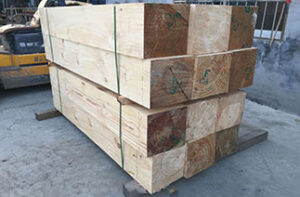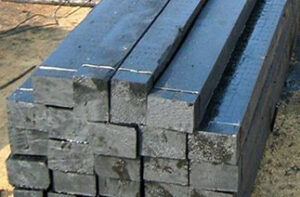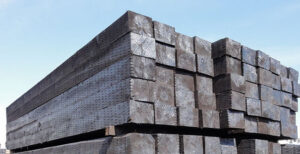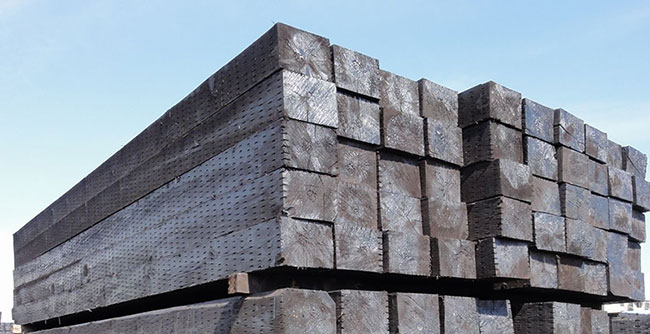The Main Hardwood Material for Wooden Sleeper
When it comes to wooden sleeper, we are familiar with several hardwood sleepers, such as oak sleepers and pine sleepers. The hardwood materials of oak sleepers and pine sleepers have two things in common, one is that the oil content is relatively high, and the other is that the growth cycle is relatively long. The higher the oil content of the wood, the wear-resisting property of the wooden sleeper will be better, and it will not crack easily. Pine has a long growth cycle, fine rings, flexible wood texture and good elasticity. The wooden sleeper made of wood materials with the above characteristics can effectively disperse the pressure exerted by the train, thereby prolonging the service life of the wooden sleepers.

Buckler Railway’s criteria for selecting wooden railway sleeper materials
Tree knot:
The maximum size of the live knot and dead knot within the track range is no more than 6cm. An open knot and a rotten one does not allow to appear.
Rotten side:
Only one end of the end face is allowed to rot, but the depth shall not exceed 1% of the railroad tie’s length. The allowable slight rotten area of wooden sleeper shall not exceed 1% of the whole wood area.
Crack in wood:
The longitudinal crack length shall not exceed 40cm.
Pest parts:
The total number of pest holes in the track-laying area of each wooden railway sleeper shall not exceed 5.
Treated Wooden Sleepers for Sale
Due to the fetuses of the wood, wooden railway sleepers are very susceptible to pests, environmental and climatic effects, causing decay. In some dry climate areas, the wooden sleeper is very easy to weathering erosion, resulting in the wooden sleeper cracking deformation. Therefore, in order to prevent the occurrence of these damages, the wooden sleepers are treated with anti-corrosion and anti-cracking before being sold.

Anti-corrosion treatment
The treated railway sleepers by corrosion are made by soaking the wood in chemical anticorrosive preparation through high temperature and pressure treatment by chemical method. Treated sleepers absorb enough preservatives to make them very strong, resistant to corrosion and waterproof. Treated railway sleepers laid on railway lines can effectively extend the service life.
Anti-cracking treatment
For wooden railway sleepers shipped to dry areas more consideration needs to be given to the effect of the local climate on accelerating the cracking of the wooden sleepers. Increase the artificial drying time of the wooden sleepers appropriately, such as extending the vacuum time, or carry out more than two cycles. Treated railway sleepers will have a moisture content close to the balanced moisture content of the wood in this area, which can reduce the cracking and deformation of the wooden sleepers in transportation and use, thus extending the service life of the railway sleepers.
The Advantages of Wooden Sleeper Compared with Concrete Sleeper and Composite Sleeper




